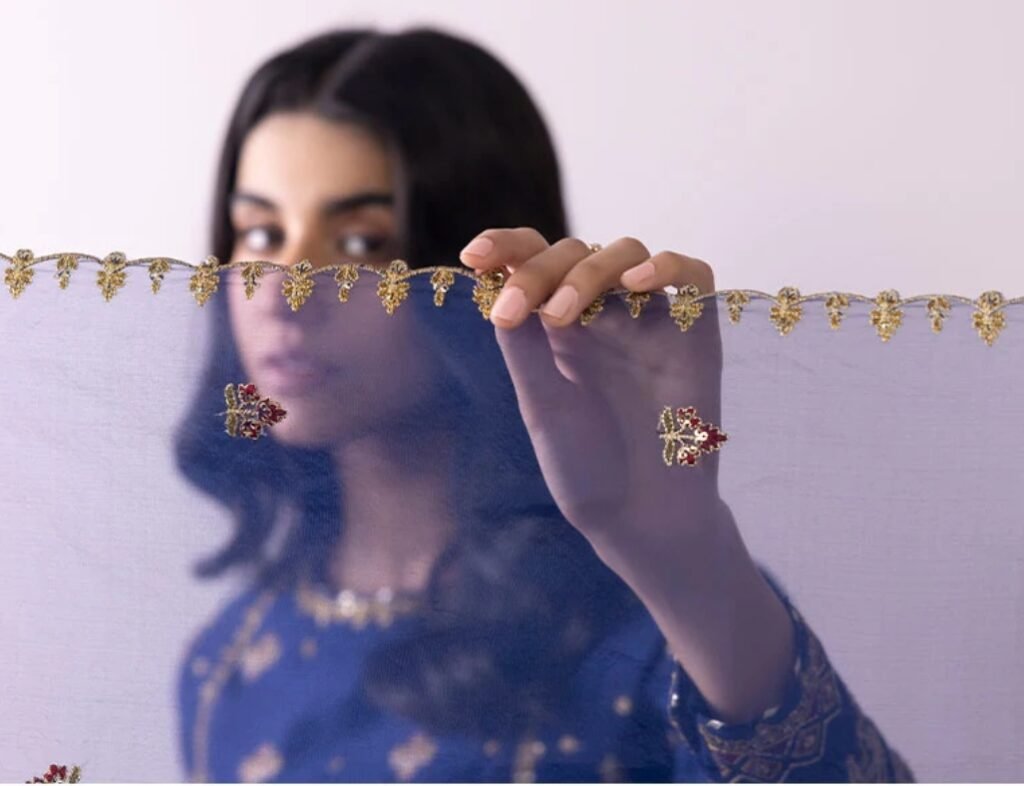Pakistan, a country with a diverse cultural heritage, is known for its vibrant and colorful traditional dresses that reflect the rich history and traditions of the region. The traditional attire of Pakistan is not only a symbol of its cultural identity but also a source of pride for its people. In this article, we will take a closer look at the beauty of Pakistani traditional dress and explore the intricate details that make each outfit unique.
The Influence of History and Culture
The traditional dress of Pakistan is a beautiful blend of various influences, including the region’s history, culture, and climate. Each province in Pakistan has its own distinct style of traditional dress, which is a reflection of its unique heritage. For example, the vibrant and heavily embroidered dresses of Punjab are a stark contrast to the more subdued and elegant outfits of Sindh.
Similarly, the traditional dress of Balochistan is known for its intricate mirror work and bright colors, while Khyber Pakhtunkhwa’s attire is characterized by its simplicity and practicality, suited for the region’s rugged terrain.
The Allure of Pakistani Fabric and Embroidery
One of the most striking aspects of Pakistani traditional dress is the use of exquisite fabrics and intricate embroidery. From the luxurious silks and chiffons to the delicate thread work and mirror embellishments, Pakistani traditional dresses are a work of art. The skilled artisans in Pakistan spend hours creating beautiful embroidery patterns that add a touch of elegance and sophistication to the outfits.
Pakistani traditional dress blends vibrant colors, intricate patterns, and diverse fabrics, celebrating tradition while embracing modern influences. It stands as a symbol of cultural pride and timeless elegance.
The traditional dresses in Pakistan are known for their vibrant colors and intricate designs, reflecting the rich cultural heritage of the country. Each region in Pakistan has its own unique style of traditional dress, showcasing the diversity and creativity of Pakistani fashion. Whether it’s the flowing silhouette of a shalwar kameez or the intricately adorned bridal lehenga, Pakistani traditional dresses are a symbol of beauty and grace. The attention to detail and craftsmanship in these outfits make them truly special, making them a popular choice for special occasions and celebrations. Pakistani traditional dress is not just clothing, but a form of artistic expression that has been passed down through generations, embodying the timeless elegance and beauty of Pakistani culture.
The Diversity of Pakistani Traditional Dresses
Pakistani traditional dress is not limited to a single style or design. In fact, there is a wide variety of outfits that are worn on different occasions and festivals. From the flowing Anarkali dresses to the intricately designed Shalwar Kameez, each outfit has its own charm and beauty. The colorful dupattas and shawls that are paired with these dresses add an extra layer of grace and elegance.
Pakistani traditional dress is a vibrant reflection of the rich cultural heritage of the country. The Anarkali dresses are floor-length, flared outfits that are perfect for weddings and formal events, while the Shalwar Kameez, consisting of loose trousers paired with a long tunic, is a versatile and comfortable solution for regular wear.
The Modern Twist to Traditional Attire
While traditional dresses in Pakistan have a deep-rooted history, they have also evolved with time to incorporate modern trends and styles. Many designers in Pakistan are now blending traditional elements with contemporary designs to create fusion wear that appeals to a wider audience. This fusion of traditional and modern styles has gained popularity not only in Pakistan but also on the international fashion scene.
This blending of traditional and modern styles has resulted in unique and versatile outfits that can be worn for various occasions, striking a balance between cultural heritage and modern aesthetics. The fusion wear in Pakistan showcases the rich craftsmanship, intricate embroidery, and vibrant colors of traditional attire, while also embracing the silhouettes, cuts, and fabrics of contemporary fashion.
Promoting Cultural Heritage Through Fashion
By showcasing the beauty of Pakistani traditional dress, designers and fashion enthusiasts are not only celebrating the rich cultural heritage of the country but also promoting it on a global platform. Pakistani traditional dresses have been featured in fashion shows and exhibitions around the world, earning praise for their intricate craftsmanship and unique designs. This has helped in creating a greater awareness and appreciation for Pakistani culture and traditions.
The vibrant colors, luxurious fabrics, and exquisite embroidery of Pakistani traditional dresses such as shalwar kameez, sarees, and lehengas have captured the attention of fashion connoisseurs worldwide. Designers have been inspired by the diverse cultural influences in Pakistan, including Mughal, Persian, and regional artisanal techniques, resulting in stunning pieces that blend tradition with modern trends.
Through their creations, designers are not only preserving the legacy of Pakistani craftsmanship but also providing employment opportunities for skilled artisans and promoting sustainable fashion practices. By incorporating traditional elements into contemporary designs, they are able to appeal to a wider audience while staying true to their roots.
Conclusion
In conclusion, Pakistani traditional dress is a true reflection of the country’s rich cultural heritage. The beauty and elegance of these outfits have captivated the hearts of people around the world, making them a symbol of Pakistan’s identity and tradition.
As we continue to explore the intricate details and unique styles of Pakistani traditional dress, we come to appreciate the artistry and craftsmanship that goes into creating these masterpieces. It is through these beautiful traditional dresses that the essence of Pakistan’s culture and heritage is preserved and celebrated for generations to come.
